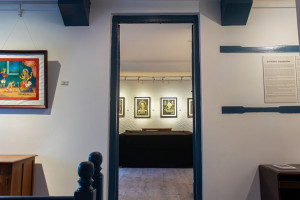Arts
Practising and discussing art in the time of Covid
With galleries shut and events cancelled, here’s how some art collectives are keeping art alive and thriving in the country.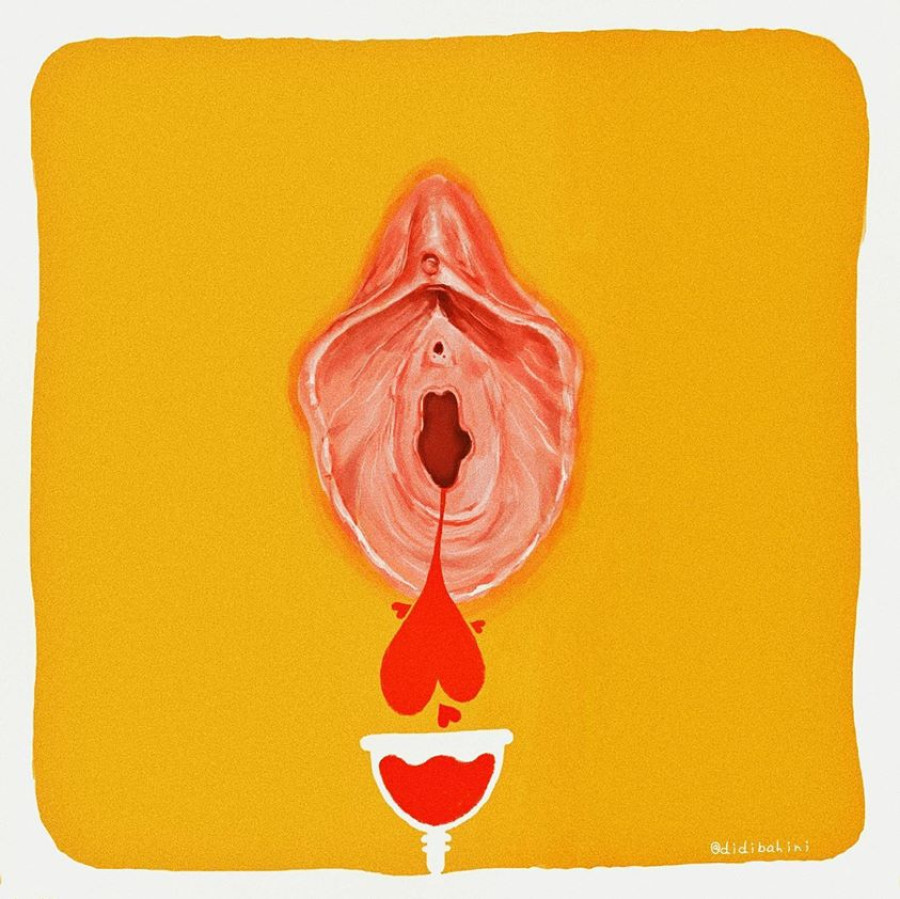
Srizu Bajracharya
As the lockdown continues to disrupt life, artists and creatives around the world, and in Kathmandu, are quietly at work. Even with galleries shut and events cancelled, the art community in the Valley continues to spend their time making and discussing art and life.
While for some artists the pandemic is proving to be a time to reflect on their individual stylistics, for others this time has become a crucial period to stay connected. The past month also saw virtual art exhibitions being hosted for the first time, which for many collectives is still unexplored territory. Despite the uncertainty of the current time, it is clear the art community is continuing to push forward, using online platforms to engage with people and talk about art.
The Post reached out to art collectives to know how they are spending their time, and what projects are currently in the works. Here’s what is happening:
Engaging with the community: Micro Galleries
While many art collectives in the country are still grappling with the lockdown and figuring out the digital medium, for Micro Galleries, a global art initiative that connects independent artists globally, manoeuvring the digital world hasn’t been that much of a hassle. “Due to social distancing restrictions, many people have been forced into the digital medium and are now putting their physical works online,” says Kat Roma Greer, artistic director of Micro Galleries. “However, taking full advantage of the virtual realm for creativity works differently to just transitioning from one medium to another.”
The art hub during this pandemic is working to fulfil two roles: One, to help artists upskill themselves and the other to engage people with art. Recently, they organised an art activity, ‘Words in Windows’, which called for participants from all over the world to place poetry, words of hope, love and resilience in their windows. The contributions from across the globe were showcased on social media and will be put up online in June.
While many in the country believe art is disposable, especially at such an economically unstable time, Roma Greer believes that art becomes more relevant and vital for people at such a time. That is why, for their next project, ‘Art Cards to Health Carers,’ Micro Galleries is calling out to people to make cards for health care workers at the front line.
Calling attention to issues: Kor Art Collective
As much of the world has moved online with the lockdown, many art collectives are using this time not just to engage people with art but to address other important issues that are at the risk of being sidelined. One such independent collective that is working on such issues is Kor Art Collective.
In their recent project Korantined Whispers, which they hosted through their social media platforms, 36 participants gave each other a prompt, based on which the artists had to come up with an artwork each within 24 hours. The art works explored various themes discussing life from home during lockdown to the ways of how the pandemic has affected life everywhere. The collective is now preparing to host a virtual show of the works.
Besides this project, the collective has also been calling out people to make artworks regarding the felling of trees at Nijgadh in collaboration with PAN (People’s Alliance Nature) Nepal. And this online campaign of theirs has gained a lot of public attention. “This could be the opportune moment to get the message across,” says Kiran Maharjan, a Nepal-based artist who is a member of the collective. “With people constantly devouring news every day we plan on getting this message through their radar and make them aware of other issues like this. The more we gather people to raise issues about this [Nijgadh], the louder the collective voice becomes for the government to take some action,” says Noor Rajbhandari, another member of the collective.
The need to carry on despite everything: Kaalo.101
As life continues under the overwhelming gloom of Covid-19, Kaalo.101 has been hosting a virtual exhibition, ‘Breaking the Silence 1.0’ that they had put up on May 28, marking Menstrual Hygiene Day to normalise menstruation and conversations around it. The virtual exhibition was organised in collaboration with Dignity without Danger, a research project that studies social, religious and cultural menstrual practices in Nepal.
As Kaalo.101’s first virtual exhibition, it brings together the experiences and stories of menstruation from various parts of the country and around the world. Its virtual show allows the audience to explore the gallery space and immerse in conversations about menstruation. Multiple voices of women speaking about menstruation draw the audience right into the issue at hand: of normalising menstruation and getting rid of the taboos surrounding the monthly cycle. In the exhibition, tampons skyrocket in space, sanitary pads fly with wings, menstrual cups fill up with love hearts. What makes the exhibition more powerful is its inclusiveness that brings to the fore experiences from people outside the valley.
As covid news continues to inundate social media feeds, arousing more tension and anxiety, creatives at Kaalo.101 believe as artists they are also responsible in reminding people of other issues that still matter too. The collective believes that art needs to continue despite the uncertainty that surrounds the world, and now more than ever should challenge the conventional idea of art.
Observe, learn and retreat: ArTree Nepal
While many art collectives and galleries are undertaking projects to engage people in the virtual world, ArTree Nepal has been taking the time to reflect on its artists’ individual journeys and planning the way forward.
For now, the collective has been hosting more in-closed group meetings to discuss the pandemic and their response while focusing more on nurturing artists’ individual growth as artists. “Our collective is more known for research-based works rather than reactive art pieces. And that’s why we haven’t really immersed ourselves in making any works right away. At the moment, we are just taking the time to observe things,” says Sheelasha Rajbhandari, a member of the collective.
Rajbhandari, along with Hit Man Gurung, is curating the Kathmandu Triennale 2020, a mega art event that has been taking place every three years in Kathmandu. With the event postponed for now, the collective has been diving deeper in brainstorming sessions. “Before the lockdown, we were looking at how art has shaped history, and with the pandemic our works have become even more relevant and contextual, therefore, we are investing more on research and observing how to bring things together,” says Gurung. The collective is now also in works to organise virtual discussion programmes. “But as of now, we are still planning and deciding,” he says.
Keeping up peoples’ spirit: Sattya Media Arts Collective
Since the second week of the nationwide lockdown, Sattya Media Arts Collective has been organising a talk series ‘In Conversation with’. The art collective has completed more than 20 sessions with artists from diverse backgrounds both national and international, says Robic Upadhayay, programme manager at Sattya.
“We have been organising it every week, sometimes 2 to 3 times in a week. The conversation is hosted over Zoom and streamed live over Facebook. And we usually have more than 25 participants in Zoom for a session while many watch the session live through our Facebook page,” he says.
The idea behind the casual virtual talk was to keep the spirit of people high. “It was not just to engage people at home but to inspire them to keep moving forward, especially because it is easy to feel demotivated right now,” says Upadhayay.
“Initially, we didn’t know how people would respond to the virtual programme since Zoom talks and virtual sessions are still relatively new for people,” he says. Prior to hosting the virtual conversations, Sattya in collaboration with Square Studio had been organising monthly ‘Artist Talks’ at their space. “For our first pilot talk series, we had Bijay Gajmer, a photojournalist. The response was positive and so we continued the series,” he says.




 18.12°C Kathmandu
18.12°C Kathmandu
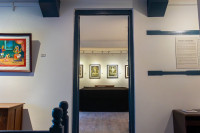
%20(1).jpg&w=200&height=120)
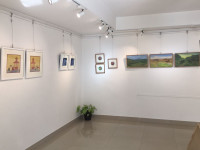
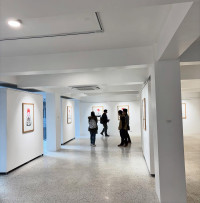
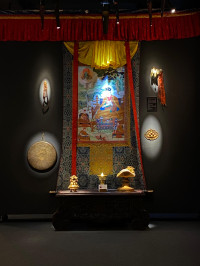
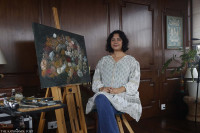
%20(1).jpg&w=300&height=200)
